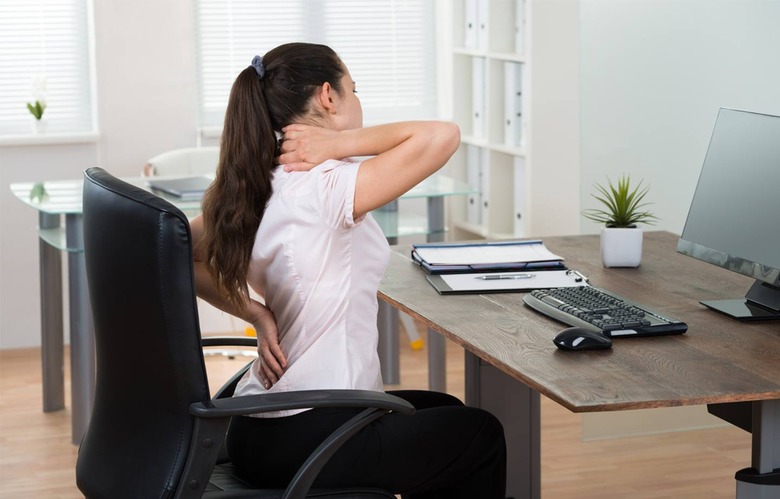Sitting All Day May Be Killing You
Before I started working at The Daily Meal, I was a barista. As a coffee-slinger, I was on my feet the entire day. Though standing for six or eight hours at a time was taxing, sitting all day is even worse.
Humans were never meant to sit for long periods of time. We evolved to be upright and active, not slouched and sedentary. Just think about how many hours are spent in a seated position: driving to work, sitting on a train, working on the computer, watching a movie — all of these activities are done while sitting. Sixty-seven percent of workers report that they eat lunch every day at their desks. And when we go home, we often order takeout or delivery, eliminating the need to stand while prepping, cooking, and cleaning.
Sure, sitting can be uncomfortable; the posture suffers, the spine rolls forward, and your underwear sticks to your butt. But the side effects can be more than just a literal pain in the butt: Sitting can actually kill you.
This statement is not a hyperbole. Studies have shown that continuous sitting can result in a number of different health complications from obesity and metabolic syndrome to increased blood pressure and cardiovascular disease. A study from Annals of Internal Medicine found that sitting was associated with "deleterious health outcomes regardless of physical activity," meaning that a few hours at the gym can't reverse the effects. The dangers of sitting too much can even spread as far as the brain; research has linked more time sitting to an increased chance of developing dementia.
Fortunately, there are ways to emerge from our rolling coffins. One simple trick is to widen the angle of the back of your chair from 90 degrees to around 135 degrees, which will relieve the strain on your back. Another option is the stand-up desk. It doesn't have to be expensive or heavy, and it can be as simple as a sheet of plywood across two sawhorses. The stand-up desk isn't a new trend: supposedly, Leonardo da Vinci, Benjamin Franklin, Winston Churchill, and Ernest Hemingway all used standing desks.
